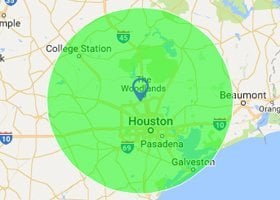How Often Should Restaurants Clean Their Traps?
All restaurants should follow rules and regulations related to grease trap cleaning. In this guide, we’ll discuss how often restaurants should clean their traps and provide tips for maintaining efficient sewage systems.

What is a grease trap?
A grease trap is designed to trap fats, oils, greases and solids (FOGS) produced during cooking. The trap works to facilitate efficient sewage processing and reduce the risk of blockages and clogging.
How often should restaurants clean their grease traps?
All restaurants, food businesses and eateries are required to utilize grease traps to lower the risk of clogging sewage systems in towns and cities. Restaurant owners have a responsibility to ensure that they are aware of and that they adhere to local regulations. It is possible for business owners to face penalties, including substantial fines, if they don’t comply with regulations.
The frequency of trap cleaning will depend on key factors, including the size of the grease trap and the amount of FOGS produced. Busy restaurants and eateries that generate a lot of grease and fats will need to clean their traps more frequently than smaller establishments, such as coffee and sandwich shops.
As a minimum, grease trap cleaning should be completed every 3 months. For busier restaurants and businesses that produce large volumes of FOGS, for example, steakhouses and fast food outlets, owners should ensure that cleaning is undertaken more frequently, for example, monthly.
The ¼ rule
The ¼ rule is an international guideline, which encourages trap cleaning once the level of FOGS reaches the 25% mark. If the grease trap is more than one-quarter full, it won’t perform effectively.
Why is grease trap cleaning important?
Grease trap cleaning is important for several reasons, including:
Safety
Hygiene
Maintaining efficient sewage systems
Grease traps that are too full can increase the risk of fires and cause blockages in municipal sewage systems. They can also cause unpleasant odors from the drains and leaks. In addition to these risks, business owners can also face fines if they don’t adhere to municipal and environmental regulations.
What does grease trap cleaning involve?
If you run a restaurant, you may be thinking about hiring professional grease trap cleaning services. Grease trap cleaning doesn’t just involve removing fats, oils, grease and solids. It also involves keeping a record of cleaning procedures and completed processes and employing suitable disposal techniques. Hiring a professional service frees up time for restaurant staff to focus on cooking food and serving customers and it will also ensure that the business is compliant with the relevant regulations.
Trap cleaning services cater to different types of food businesses, and companies provide solutions for restaurants, delicatessens and cafes that require monthly, quarterly and annual cleaning.
Conclusion
Trap cleaning is an essential procedure for restaurants and food businesses. The aim of a grease trap is to capture fats, oils, grease and solids to reduce the risk of blockages in municipal sewage systems. If you run a restaurant and you’d like advice about trap cleaning, or you’re keen to find out more about professional trap cleaning services, don’t hesitate to  get in touch with Texas Pride Septic Inc.
get in touch with Texas Pride Septic Inc.




